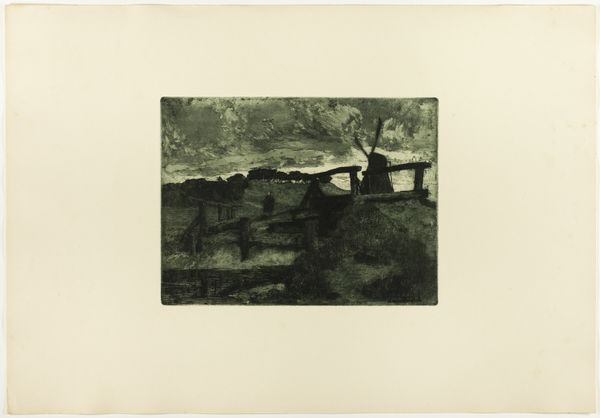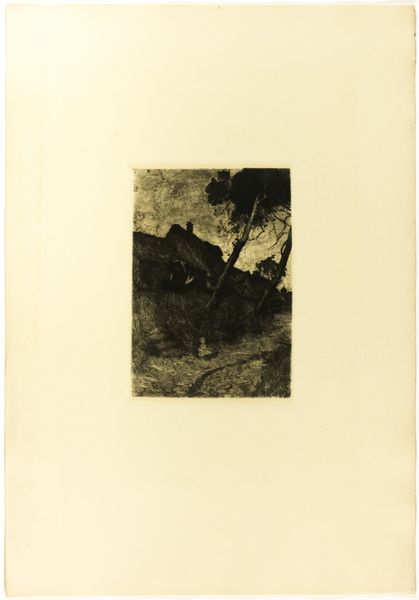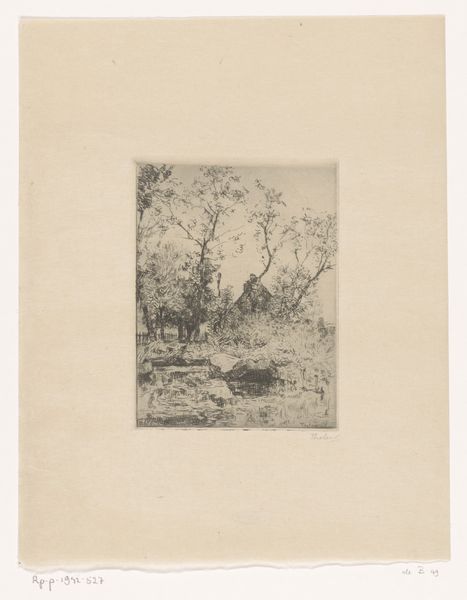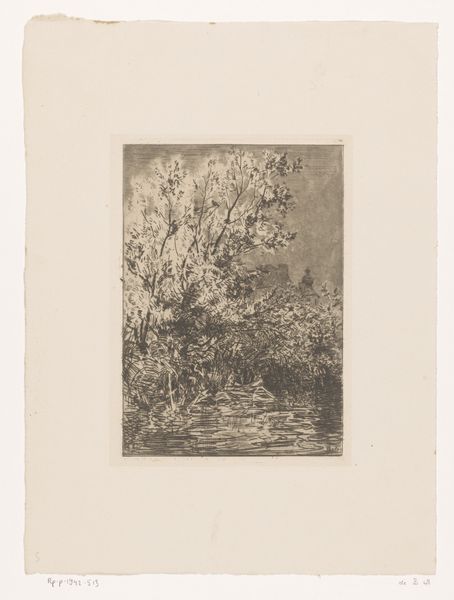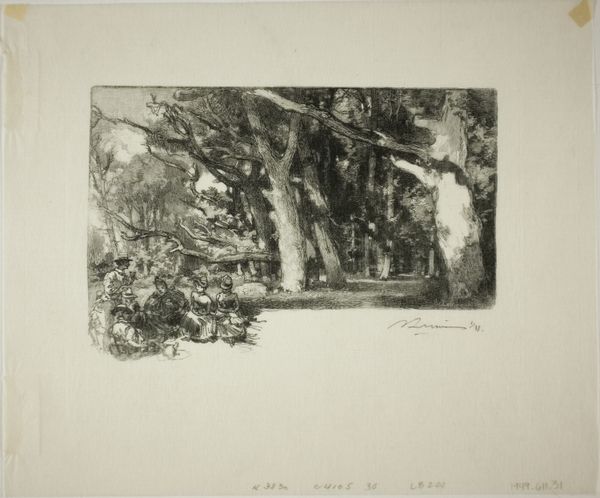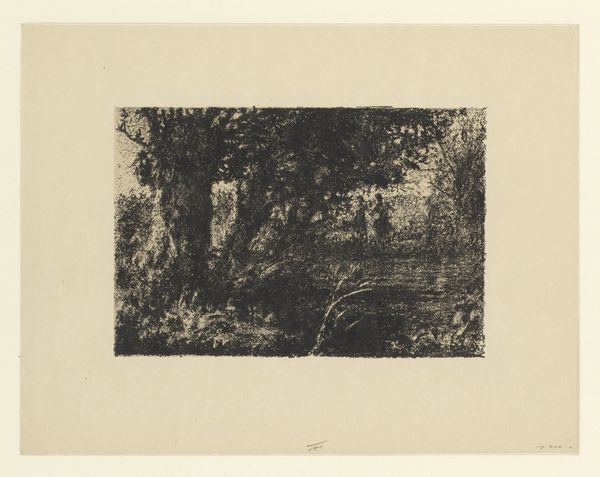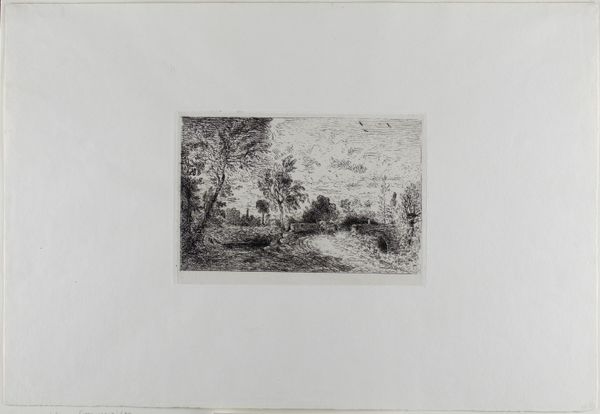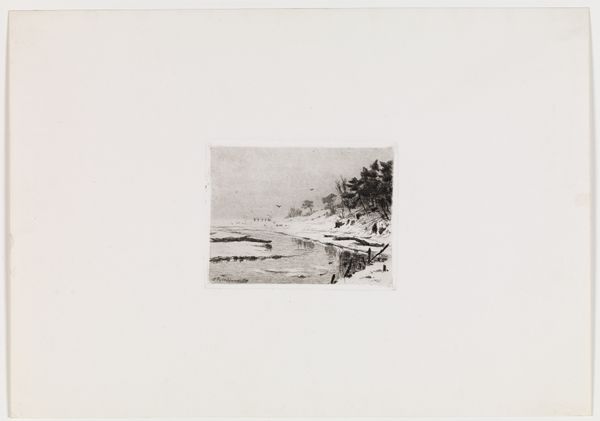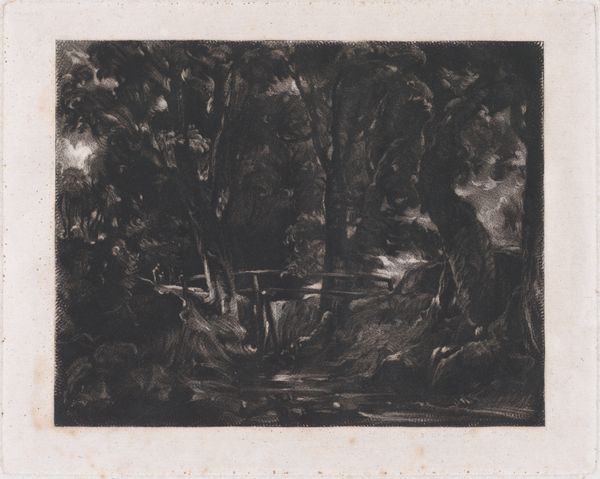
Dimensions: 210 × 160 mm (image); 230 × 168 mm (plate); 510 × 350 mm (paper)
Copyright: Public Domain
Curator: What a moody piece. This print, called "At the Moor," was created around 1895 by Fritz Overbeck. It's a beautiful etching, using watercolor on paper. Quite small, I'd say? Editor: It feels ominous, doesn't it? Those twisted tree limbs look like skeletal arms reaching out. A scene set in a 'moor' might depict various narratives. In colonial and early national US contexts, moors symbolized liminal spaces. Curator: Exactly! There's a sense of transition, of being caught between worlds. Look how the etching captures that uncertain light on the horizon—that could be sunset or sunrise. Do you sense isolation, too? I can almost feel the dampness in the air! Editor: Isolation definitely. Remember, Overbeck was part of the Worpswede artists' colony. It sought refuge in nature to protest urban industrialization. He was surrounded by a community but perhaps struggled to integrate social responsibility in his artistic output, often critiqued in such utopian settings. Curator: That tension between community and individual expression feels palpable in the composition. The trees are grouped, yet each is starkly individual in its form. The figures by the water’s edge – are they people or animals? Hard to discern. Editor: Ambiguity is crucial here, particularly in considering identity politics. This piece might subconsciously respond to anti-Semitic sentiments. German Expressionists also used art as a weapon for cultural resistance. Did Overbeck intend to comment through obscured, hidden symbolism? Curator: Fascinating to think about that hidden dialogue. What appears as a serene landscape is, perhaps, a whispered protest. The reflections in the water... distorting everything above. Editor: And yet the landscape itself seems to have suffered damage from land exploitation. The moorland looks dry and almost abandoned despite a source of water nearby. Curator: This exploration certainly enriches how I interpret Overbeck’s world. Next time I face such conflicting emotions in nature, I'll see a bit of "At the Moor". Editor: It gives us much to consider as we walk through the museum, reflecting on the artists' challenges navigating the intersections of identity and environmental ethics.
Comments
No comments
Be the first to comment and join the conversation on the ultimate creative platform.
